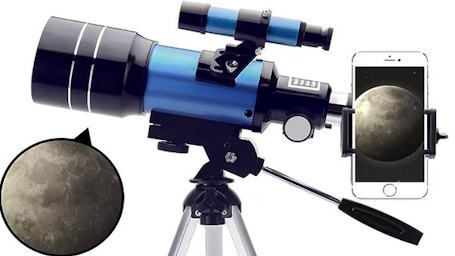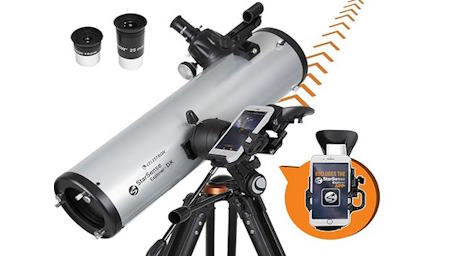[amazon_auto_links asin='B00D05BKOW, B0953GG4RQ, B081TLNB5B, B09P8JQWF4, B00WCG3UOS, B095XQVTNM']
The process of selecting the perfect telescope for your needs can feel daunting. To ease this journey, we’ve compiled valuable resources to guide your decision-making. Begin by watching our informative video, “How to Choose a Beginning Telescope,” and then delve into the detailed insights provided in the article below.
Stargazing is a universal joy, and with numerous telescope designs available, the challenge lies in determining the ideal choice for a beginner. The query of which telescope suits a novice arises frequently, and the most qualified responder is you! The telescope that aligns with your lifestyle and astronomical aspirations is the best choice. To guide you effectively, let’s examine key considerations that will help tailor your decision to your specific needs.

Embarking on the journey of stargazing and exploring the wonders of the cosmos is an exciting endeavor. Choosing the right telescope is crucial to make the most of your astronomical adventures. This comprehensive buying guide will help you navigate the complexities of selecting the perfect telescope for your needs, ensuring that you find an instrument that aligns with your interests, budget, and level of expertise.
Understanding Telescope Types:
1. Refractor Telescopes:
Advantages: Known for clear, high-contrast images.
Considerations: Larger refractors can be expensive.
2. Reflector Telescopes:
Advantages: Cost-effective with good aperture-to-cost ratio.
Considerations: May require more maintenance.
3. Compound Telescopes (Catadioptric):
Advantages: Versatile with a combination of reflector and refractor elements.
Considerations: Can be more complex and expensive.
Each type has its strengths, so consider your priorities—whether it’s image clarity, cost-effectiveness, or versatility—when choosing the telescope that suits your preferences.
Aperture Matters:
The aperture, the diameter of the primary lens or mirror, is a crucial factor. Larger apertures capture more light, enabling better resolution and visibility of faint celestial objects. For observing galaxies and deep-sky objects, aim for a telescope with a minimum aperture of 4 inches (100mm) or larger.
Focal Length and Magnification:
Understanding the relationship between focal length and magnification is key. A longer focal length provides higher magnification, but this can also narrow the field of view. Consider your observing preferences—whether you’re into planetary details or wider views of deep-sky objects—when evaluating focal length.
Mounts and Stability:
Choose between altazimuth and equatorial mounts. Altazimuth mounts are straightforward and user-friendly, while equatorial mounts track celestial objects more precisely, making them ideal for astrophotography. Stability is crucial for steady observations, so invest in a sturdy mount that complements your telescope.
Portability and Size:
Consider where you plan to observe. If you seek dark sky locations, a portable telescope is essential. Compact and lightweight designs, like Dobsonian or travel-friendly refractors, are perfect for on-the-go astronomers. However, if you have a dedicated observing site, a larger telescope may be suitable.
GoTo Technology: Tracking
Telescopes with GoTo technology automate celestial object tracking. While convenient, these systems can be complex for beginners. Decide if you prefer manual navigation or the convenience of automated tracking.
Budget Considerations:
Telescopes come in a wide price range. Determine your budget early on and explore options within that range. Keep in mind that accessories such as eyepieces, filters, and collimation tools may add to the overall cost.
Brands and Reputation:
Reputable brands like Celestron, Orion, and SkyWatcher offer a range of telescopes. Consider customer reviews, expert opinions, and the brand’s reputation for quality and customer support.
Entry-Level vs. Advanced Telescopes:
For beginners, user-friendly telescopes with straightforward setup and operation are ideal. Dobsonian telescopes are excellent entry-level options. Advanced users may explore compound telescopes and those with advanced features for astrophotography.
Accessories and Upgradability:

Evaluate the included accessories such as eyepieces, finderscopes, and mounts. Additionally, check the telescope’s compatibility with future upgrades and accessories, ensuring room for growth in your astronomical pursuits.
Community and Resources:
Joining astronomy communities, forums, and local clubs can provide valuable insights and recommendations. Shared experiences and advice from seasoned astronomers can guide you in making an informed decision.
Choosing a telescope is a personal journey tailored to your astronomical aspirations. Consider your priorities, whether it’s planetary observation, deep-sky exploration, or astrophotography. By understanding the key features and factors outlined in this buying guide, you’re well-equipped to make an informed decision that aligns with your passion for the cosmos. Happy stargazing!
Beginner’s Quick Guide to choosing your first telescope
Buying Guides: Saving Tips & TricksBOGO Promotions: Buy One, Get One Free Deals
Vacuum Cleaners Buying Guide
Smart TV buying guide
Your Ultimate Telescope Buyer’s Guide
Laptop Buying Guide
Car Rental Tips
Costco Car Rental: Is it Really a Good Deal?
How to save money on Auto Insurance
Save Money and Stop Buying Premium Gasoline
